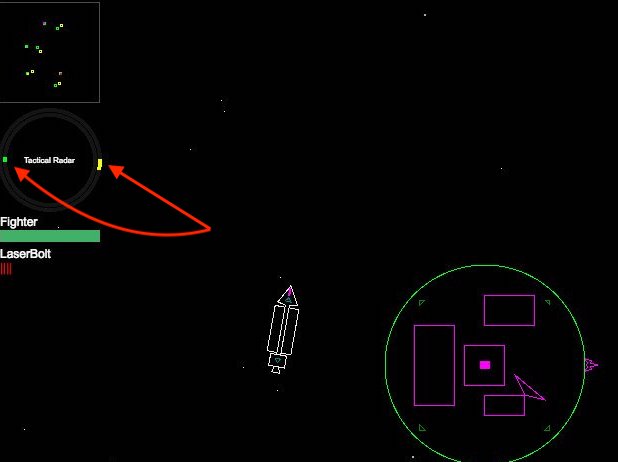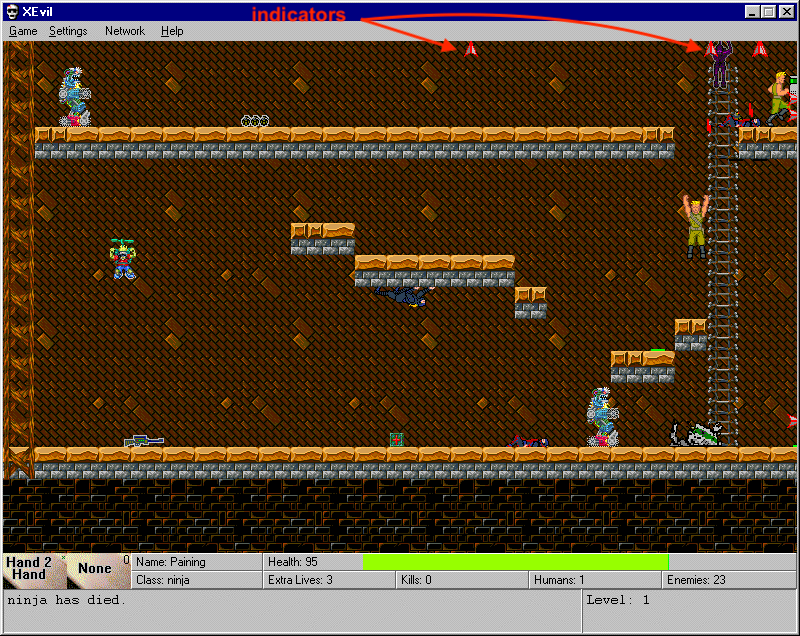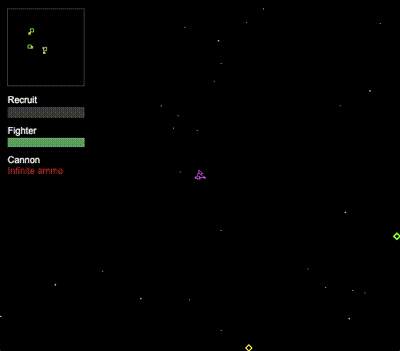This post is a Celestial Combat devlog and also be found here.
Game design is essentially UX design. Bad experience design is more than jarring: it drives beginner players away. CelCom previously had an example of bad experience design in one of it core gameplay mechanics: landing spaceships was awkward and difficult. First you needed to be able to find the planet you want to land on, then you had to move to it, possibly avoiding other planets and stars en route.
Landing fighters
Landing a fighter spaceship is a basic action that the player has to do in order to lay claim to planets, re-arm weapons with ammo supplies, and repair their ship. This skill is one of the core mechanics of the game.
Parking up on a planet is the successful outcome of a landing, the alternative is certain death. Two factors decide if you make it or not:
- You have to orient the ship so that it faces outward from center of the planet
- Your speed at the moment of contact with the planet’s surface needs to be low enough to survive the landing
Previous design
Previously the UI used a dial indicator. Colored arcs would rotate within two concentric circular tracks to visualize the angle from the ship to the nearest star and the nearest planet.

The main problem with this display was its skeuomorphism: in a real spacecraft you may have dials and controls that you may have to look at in order to ascertain information about your vessel. At best, bearing indicators may be visible via a HUD but this is fundamentally different from the perspective of the player in the game.

Additionally, the player had to land fighters without a speed indicator, purely using the movement of the background star field and relative motion of the stars as their speedometer. General feedback from players was that these conditions would often result in very few successful landings and not much fun.
Landing was supposed to be hard, but not that hard.
Improved design
Top-down perspective is a 3rd-person view, while dials and meters are usually 1st-person UI elements; two distinct ways to show vital information. Maybe we could borrow a concept for a heading indicator from other games with this perspective?

- GTA1 uses a yellow arrow that follows the player sprite around and points to the next objective. This was a good start, but was too limiting for Celestial Combat. Due to the sparsity of the graphics, putting a set of always visible dials near center of the screen would probably obscure visual focus and annoy the player. We can’t use this design as is.

- XEvil uses an enemy indicator that follows the enemy around the edges of the game screen if the enemy is out of view and disappears when the enemy is in view. This was a much better design to replace the old dials in Celestial Combat.
A new landing speed indicator was set to be shown only when the fighter ship was within a certain distance of a planet, following the “get-out-of-the-way” philosophy. Crashing speed was also set a little higher. The game would allow for rougher landings to avoid discouraging players.

This is what it looks like in action:

Coding the new design for the indicators
We ended up coding 4 distinct indicators for this UI component:
- Nearest planet (green diamond)
- Nearest star (yellow diamond)
- Targeted object (red crosshair)
- Checkpoint (blue letter “N”)
The indicators only appear at the edges of the viewport. The most complicated part of implementing this UI was projecting the various positions (in game space) to the border of the viewport (in HUD space).
But since the viewport is a rectangle there are only 4 cases we need to consider. Indicator should be shown:
- At the TOP border: Y value is known, just need to calculate X
- At the BOTTOM border: Y value is known, just need to calculate X
- At the LEFT border: X value is known, just need to calculate Y
- At the RIGHT border: X value is known, just need to calculate Y
Pseudocode for the function drawPointerFor() which is responsible for this:
if target is outside viewport
show pointer
dx = X distance between target and the center of the screen
dy = Y distance between target and the center of the screen
calculate and store aspect ratio of dx, dy
// Cases 3 and 4 handled:
// Pointer will be shown at either the LEFT or RIGHT edge of the screen
if target aspect ratio > screen aspect ratio
if dx > 0
pointer X = right edge of the screen
else
pointer X = left edge of the screen
pointer Y = 1 / target aspect ratio * pointer X
// Cases 1 and 2 handled:
// Pointer will be shown at either the TOP or BOTTOM of the screen
else if target aspect ratio < screen aspect ratio
if dy > 0
pointer Y = bottom edge of the screen
else
pointer Y = top edge of the screen
pointer X = target aspect ratio * pointer Y
else
hide pointer
Full source code for the pointer UI resides in src/client/GameScreen/HUD/Pointers.ts.
Feedback for these changes was definitely positive. We can expect to implement more UX design improvements in the future!